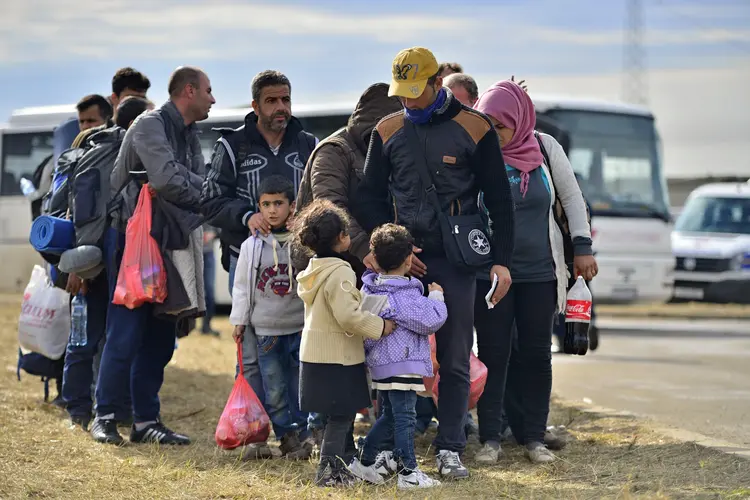
Deportation of around 4 million Afghans is being accelerated by Iran, with more than 250,000 people returning to Afghanistan from Iran in last month alone
By
This year, more than 1.1 million Afghans have been deported from Iran, marking one of the largest forced migrations in its history. Many have been asked to leave or face arrest, as a deadline set by the government to return to Afghanistan comes to an end.
Related reads:
In March of this year, the deadline to leave – July 6 – was announced, with the Iranian government ordering Afghans without the right to remain to exit the nation voluntarily by Sunday or face expulsion. However, reports have detailed how those with documents are having such vital paperwork destroyed in front of their eyes by officers.
Such forcible migration began in 2023, when Tehran started a campaign to remove foreign individuals it termed as ‘living illegally’.
Since January, more than one million Afghans have returned from Iran – 25 per cent of this figure being children – with hundreds of thousands more arriving from Pakistan, another country hosting many Afghan refugees. Pakistan aim to expel 3 million Afghans in 2025 alone.
Some days, around 40,000 people cross the border at Islam Qala in the western Herat province of Afghanistan. Iranian media reports have indicated that even Afghans with valid visas have been forcibly expelled from the country, with many migrants also claiming to experience regular discrimination in Iran.
As well as this, some reports suggest state-affiliated media have incited discrimination and violence by labelling Afghans and other minorities as traitors, using dehumanising language to vilify them.
‘Iran is casting out entire communities – men, women, and children – based on prejudice and politics, to a country where their lives and most basic rights are under immediate threat,’ said senior researcher at the Center for Human Rights in Iran (CHRI) Esfandiar Aban.
‘For most Afghans, deportation is not a return home – it is a descent into crisis, into a country ravaged by war and repression,’ Aban continued.
‘For Afghan women and girls, it’s even worse. They are being sent back to a regime that has erased them from public life. This is not just a deportation—this is a death sentence for their freedom, their education, their futures.’
What is being done to help?
Foreign aid cuts around the world have complicated efforts to respond to the crisis, with the UN, international NGOs and Taliban officials calling for more funding to support those leaving countries to return to Afghanistan.
However, forcibly relocating Afghans back to their home country is likely a recipe for a triple crisis of entrenched poverty, unemployment and climate change-related shocks.
‘Forcing or pressuring Afghans to return risks further instability in the region, and onward movement towards Europe,’ said UN refugee agency UNHCR.
Currently, UNHCR teams are at borders, receiving and assisting streams of individuals every single day. Additional staff have been deployed to provide essential relief items, hot meals and emergency financial assistance.
Due to funding constraints – alongside the scale and pace of returns – the agency has said it is not able to sustain this level of support for more than a few weeks.
As such, UNHCR are calling on the international community to substantially increase funding both in the short- and long-term. This year, the UNHCR’s response in Afghanistan is only funded at 28 per cent of the required total of $216 million.




